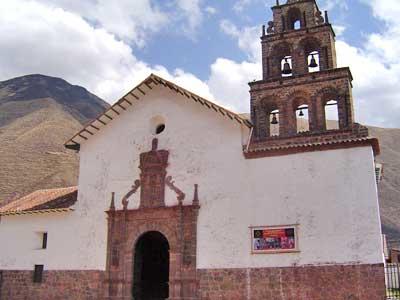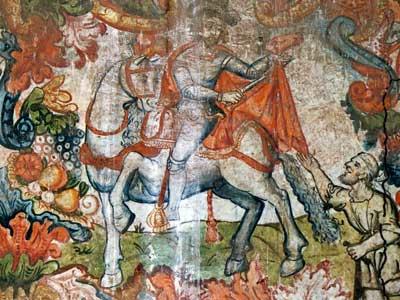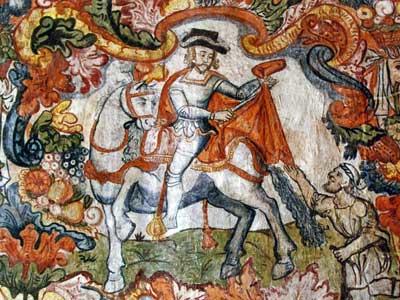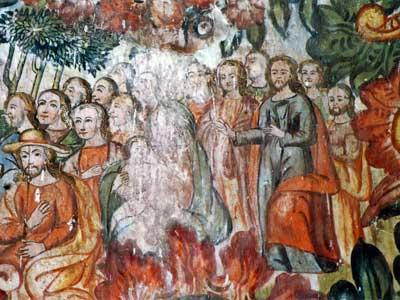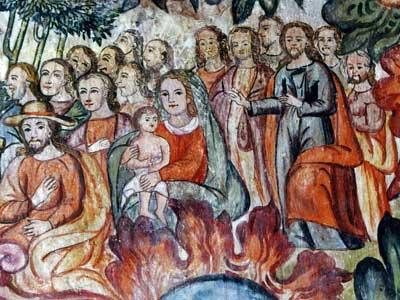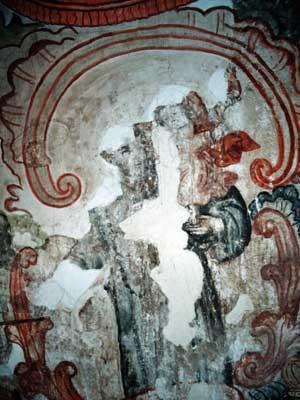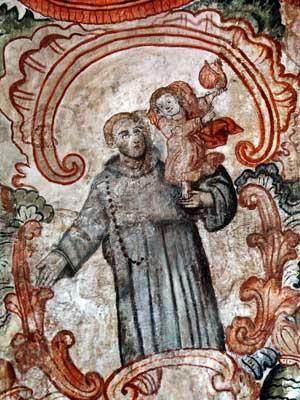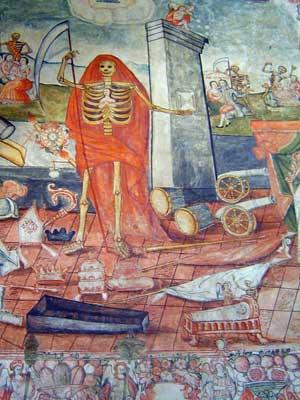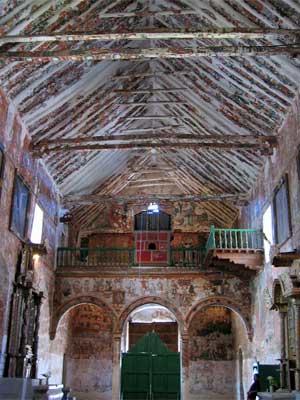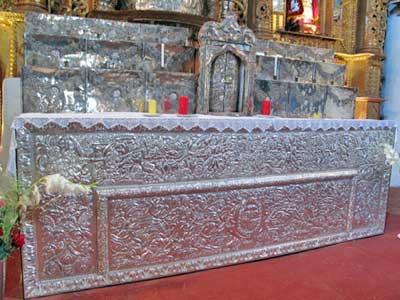San Juan Bautista of Huaro Church
Background
San Juan Bautista was built by Jesuits in the sixteenth century in the town of Huaro, strategically located on an Inca road system 35 miles south of Cusco. Between 1675 and 1699, local artists were commissioned to create the murals and decorations. These images demonstrated a fusion of indigenous and colonial beliefs and styles. For years, new compositions were painted one on top of the other. The last layer of this continually evolving work was painted in 1802 by Tadeo Escalante, an artist of both Incan and European descent. Painted scenes from the Old and New Testaments alternate over a wall surface area of approximately 575 square meters; the ceiling art adds about 360 square meters. Over these vast spaces, Escalante juxtaposed depictions of the glory of the Ascension with the damnation of the Rapture, among other Biblical stories. The painted surfaces of the interior had long been deteriorating and needed urgent intervention to prevent their rapid disintegration. Factors that contributed to the deterioration of the interior included insect infestation, poor maintenance, vandalism, seismic activity, water ingress, and erosion.
How We Helped
Between 2001 and 2009, WMF assisted in the documentation and conservation of the interior mural paintings and statues, and the conservation of the decorative wooden ceiling. The conservation work was executed by a team from the National Institute of Culture. Additional support was provided for the replication of the silver altar front, which was stolen in 2008. Funds also ensured the installation of security and lighting systems, restoration of the atrium cross and the installation of a small site museum.
Why It Matters
The comprehensive restoration of the church interior is an important part of attracting tourism and an integral component of a crafts training initiative that has been developed for the site. The restoration of the interior mural paintings is especially important, as the collection is a valuable and rare representation of three centuries of decoration and iconography in Peru.

